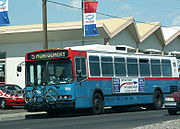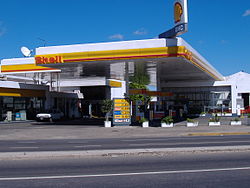
How to Apply Lessons Learned from the Great Depression
from wikiHow - The How to Manual That You Can Edit
Recent economic times may mirror what American grandparents or great-grandparents went through in the Great Depression. While this time may be a challenge, it may be an opportunity to look back and learn how previous generations coped with tough economic times. Hopefully, we'll never need to relive their lessons learned, but at the very least we can appreciate their resourcefulness and gain perspective on our own situations.
Steps
- Quit using credit. If you don't have the cash to make a purchase, then don't buy it. If you have credit cards, make sure to pay the balance off every month. If you can't pay off the balance, then cut up the credit card(s) and work on paying down what you owe. One of the first lessons learned by people who survived the Great Depression was to never borrow money unless you have a clear plan for how you're going to pay it back.[1] And when layoffs are a reality, expecting to pay for it with your Christmas bonus or your next paycheck is not a sound plan. If you don't have the money to pay for it right now, don't buy it.
- Use Affirmations Effectively - Repeat this affirmation to yourself until it sinks in: Debt is not an option.
- Prioritize Your Debts - Prioritizing your debts can help you pay them off as quickly as possible, and it can provide the security you need to get back on your feet even in lean times.
- Use Affirmations Effectively - Repeat this affirmation to yourself until it sinks in: Debt is not an option.
- Nurture positive relationships with family and friends. They will see you through difficult times. Be honest with your family and friends that you are facing difficult times financially. Discover ways to barter and help each other. During hard times, many people bond through the simple pleasures in life, many of which are almost free. During the Depression, people still had fun, just not lavish fun. Children had soapbox derbies, teenagers had dance contests, people played Monopoly, did puzzles, read, and listened to the radio. It took some imagination and ingenuity, but they had a lot of fun without hanging out at the mall, and you can too. Get together to discuss philosophy or pray; play poker or make crazy quilt pillows; play instruments and dance. Many of the friendships and alliances formed during the Great Depression on the basis of such activities stood the test of time.[2]
- Talk to Your Children About a Financial Crisis
- Get Adult Kids to Pay Their Share
- Have a Depression Dinner. Research what people ate during the Depression. It wasn't all pinto beans and corn bread.
- Talk to Your Children About a Financial Crisis
- Do it yourself. When money is short, you don't really have a choice - either you do it yourself, or it doesn't get done. Learn how to fix and maintain everything in your home, in addition to your clothes and accessories.
- Sew. Learn how to mend torn seams, hem, sew buttons, and sew zippers. This will make your clothes last much longer. When you need new clothes, either shop at second-hand stores and tailor the clothes so they fit, or buy fabric and make your own clothes from patterns. You can also apply your sewing skills to recycle old clothes into handy new things, like turning an old pair of jeans into a tote bag.
- Get in touch with your inner handyman (or handywoman). Do you know how to fix a running toilet? Pack a water shutoff valve? Change a clothes drier belt? Replace an interior doorknob?
- Change the oil in your car. While you're at it, you might want to check and change the fluids, battery and cabin air filter yourself. Alternatively, if you want to develop a good relationship with your auto mechanic, see if you can barter - perhaps an oil change in exchange for a professional haircut? Or a tire rotation for meat loaf?
- Sew. Learn how to mend torn seams, hem, sew buttons, and sew zippers. This will make your clothes last much longer. When you need new clothes, either shop at second-hand stores and tailor the clothes so they fit, or buy fabric and make your own clothes from patterns. You can also apply your sewing skills to recycle old clothes into handy new things, like turning an old pair of jeans into a tote bag.
- See frugality as a virtue. There's a difference between being frugal and being cheap or stingy. A frugal person makes the most of what they have; a cheap person is just focused on not spending money. During the Great Depression, frugality was seen as a positive trait. During hard times, it'll help you get by, but when things get better, maintaining those habits will help you build wealth.[3] Plus, frugality requires planning, creativity, and critical thinking - all of which are important life skills, regardless of the state of the economy.
- Treat food with respect. When times get tough - really tough - you appreciate having food on the table. You might never know what it's like to have to eat wet bread for dinner, but you don't have to get to that point to make the resolution to never waste food. "Take all you want, but eat all you take."[1] Cook food from scratch and, if you can, go straight to the source (such as dealing directly with farmers) or become your own source: grow your own food, keep livestock, gather wild edibles, and/or hunt wild game if possible and legal. Whatever it is that you procure for food, never let it make it to the garbage can without a very good reason.
- Save Money by Shopping Once a Month
- Get Started in the Slow Food Movement
- Keep Chickens in a City
- Learn to cook. There is probably no skill that will get you through hard times with equanimity than being able to rustle up a good meal for yourself out of whatever's around.
- While you're at it, learn other domestic skills too. Unless you're actually homeless, you can certainly afford to keep your home clean and tidy. On the other hand, whatever your worst expectations of being broke are, living in a dirty, disorganized place is likely to make it seem like they're coming horribly true.
- While you're at it, learn other domestic skills too. Unless you're actually homeless, you can certainly afford to keep your home clean and tidy. On the other hand, whatever your worst expectations of being broke are, living in a dirty, disorganized place is likely to make it seem like they're coming horribly true.
- Buy preserved (canned, dried, etc.) foods in bulk whenever the cost is lower than buying a smaller size.
- Avoid "convenience" foods, as they are usually more expensive and less healthy. Learn to cook. You can save a lot of money by cooking from scratch rather than ordering take-out or take-away. A good thrifty cook can make a tasty, nutritious meal from inexpensive ingredients and "stretch a meal". Also, leftovers are much cheaper to bring to work or school than buying lunch.
- Save Money by Shopping Once a Month
- Reuse, reuse, reuse. The amount of stuff you have should already be reduced by your limited spending, and you'll always want to think twice before throwing anything away, whether it's into the trash or the recycling bin. Get everyone involved, especially children - hold up an item that you would normally throw away and ask, "How can we reuse this?" Here are some ideas to get you started:
- Reuse an Empty Altoids Tin
- Turn a t-shirt into a sexy bikini or baby romper
- Reuse Old Shower Curtains
- Recycle Your Socks
- Reuse old containers
- Reuse an Empty Altoids Tin
- Be thankful. Be thankful when you're economically strapped? Of course. Make a list of the top five things you couldn't live without, and chances are, all of those things are not possessions. Most of all, be optimistic. As one Great Depression survivor said, "I never thought a cloud was so dark that I couldn't find a silver lining" (Betty Davison).[2]
Tips
- "Use it up, wear it out, make it do or do without." If possible, use the things you have until they are completely used up. Or, even better, do without things that don't hold up to use.
- Ask your older relatives and friends how they lived through the Depression. Most will be happy to share how they "made do". If you don't know anyone from that generation, consider volunteering at a local senior center or nursing home. You'll gain tremendous insight, and they will gain good company.
- Before purchasing anything, give it a thought, "Do I really need it?"
- Try to save on electricity bills and telephone bills. If you're purchasing an electronic device, look for the ones that save power.
Related wikiHows
- How to Budget Your Money
- How to Eat Healthy on a Budget
- How to Create a Household Budget
- How to Budget Your Money As a Teen
- How to Grocery Shop and Cook Frugally
- How to Furnish Your First College Dorm or Apartment on a Budget
Article provided by wikiHow, a wiki how-to manual. Please edit this article and find author credits at the original wikiHow article on How to Apply Lessons Learned from the Great Depression. All content on wikiHow can be shared under a Creative Commons license.





